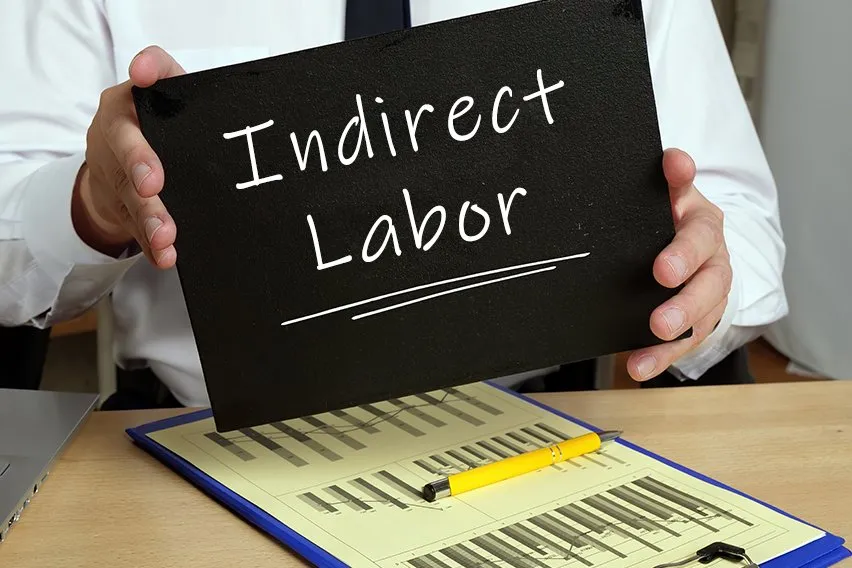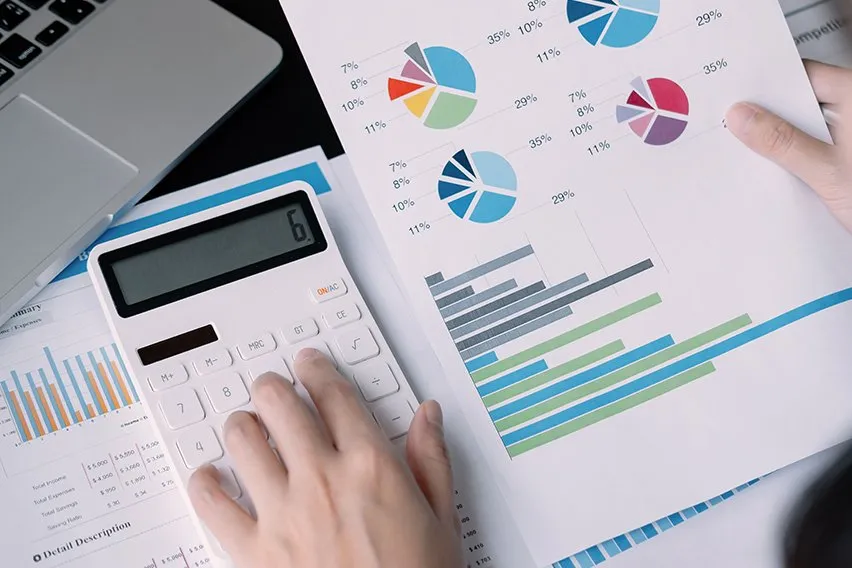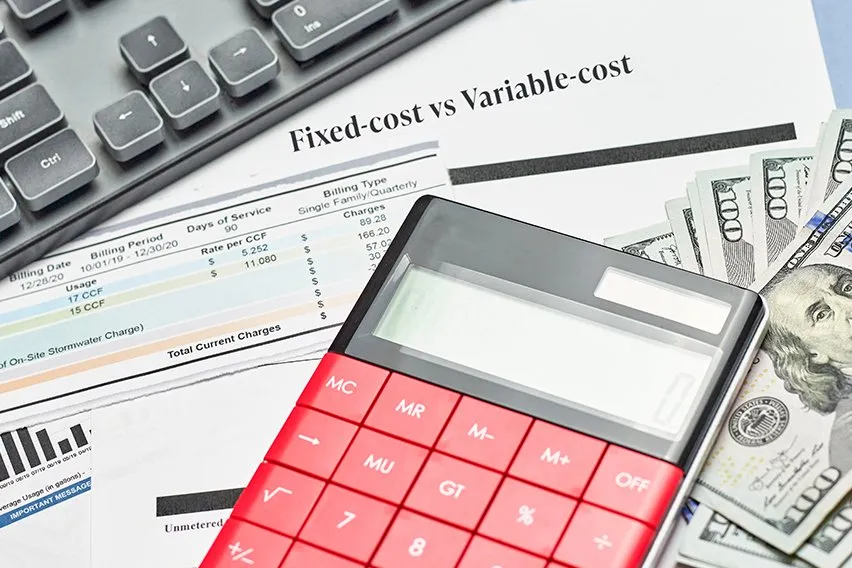What is Indirect Labor Cost?

Indirect labor cost is the cost of labor that is not directly related to the production of goods and the performance of services. It refers to the wages paid to workers whose duties enable others to produce goods and perform services.
Unlike direct labor cost, indirect labor costs are not so readily associated with specific units. Employees that make up this group include managerial and administrative staff such as supervisors, accountants, security guards and clean-up workers.
What this article covers:
- What Is Indirect Labor?
- What Is an Example of Indirect Labor?
- What Is the Difference Between Direct and Indirect Labor?
- How to Calculate Indirect Labor?

What Is Indirect Labor?
Labor is defined as the total manpower and expertise required to complete a job. It is broken down into direct and indirect labor.
Indirect labor is a category of indirect cost and refers to those employees that assist the direct labor in the performance of their work. They are not involved directly in the service or production process.
Since indirect labor cannot be traced back to a specific product or service, the related cost can’t be billed to the goods produced or the services rendered. It represents the overhead to the business needed to support the level of operations.
What Is an Example of Indirect Labor?
Imagine you’re the owner of a construction company. Consider both direct and indirect labor while contemplating contracts. Direct labor cost is easy to understand. It refers to the expenses, including wages and other benefits, that you incur for employees that directly work on the projects such as the laborer, rigger, foreman and pipefitter.
Indirect labor refers to employees who are not involved in planning or construction projects. However, they are involved in the day-to-day running of the business. This includes human resources, administration, accountants, customers relations, etc.
Examples of indirect labor include:
- Office manager, clerks, and other employees
- Administrative directors
- Legal adviser
- Cost accountants and financial accountants
- Quality control staff
- Drivers of delivery vans
- Packers and dispatch staff
What Is the Difference Between Direct and Indirect Labor?
Labor costs refer to remuneration paid to the employees by the business in the form of wages, salary bonus, allowances etc. for their time and effort.
They are usually split into direct and indirect labor costs, based on the worker’s contribution to the production process. While direct labor comprises work done on certain products or services, indirect labor is employee work that can’t be traced back or billed to services or goods produced.
For example, hair stylists at a salon who perform haircuts and other services are considered direct labor while the maintenance staff and the receptionist who support them are indirect labor.
| Basis | Direct Labor Cost | Indirect Labor Cost |
| Meaning | The cost which is directly involved in the production | Not involved in the production |
| Output | Depends on the output | Does not vary directly in proportion to the output |
| Separation | It can be separated in unit cost, cost or cost center | Cannot be traced back and separated |
| Payment | Direct expenditure | Indirect expenditure |
| Cost | Part of prime costs | Overhead costs |
| Control | Controlled through the technique of standard costing | Controlled through budgetary control |
THE ROLE OF DIRECT AND INDIRECT LABOR COSTS
Understanding the difference between direct and indirect labor is crucial for budgeting and planning. Here are some reasons why:
- To measure the efficiency and productivity of the workers
- To determine misallocation or misuse of resources
- To understand the profitability of individual products and services
- To set prices for individual products and services
- To estimate costs for business case analysis, including cost/benefit and return on investment analysis

How to Calculate Indirect Labor?
In accounting, indirect labor costs are treated like other indirect costs, as overheads. They are either expensed in the period in which they are incurred or allocated to a cost object via a predetermined overhead rate.
To calculate the indirect labor, here’s what you need:
- The number of working hours in a year for an employee can be calculated as follows: if the employee worked for 50 weeks per year and 40 hours per week, then he/she worked for almost 2,000 hours.
- Deduct the total time spent on holidays, sick leaves, training or seminars per year
The remaining hours are the total hours spent by one employee as indirect labor utilization.
IS INDIRECT LABOR A CONVERSION COST?
Indirect labor is a component of conversion cost. It is classified as an overhead and refers to the costs that cannot be traced directly to specific products or services
Conversion costs are the expenses (direct and indirect) that are required to convert the raw materials into finished products. It is the sum of labor and overhead costs of a business.
Conversion Costs = Direct Labor + Manufacturing Overhead
IS INDIRECT LABOR A FIXED COST?
Fixed costs are business expenses that remain constant, regardless of the business activity. Indirect labor costs can either be fixed or variable. For example, the salary of the manager is fixed and has to be paid irrespective of the business activity.
The salaries of certain employees such as hourly-paid administrative assistant may be variable i.e. they may increase or decrease during certain times in a year.
IS INDIRECT LABOR OVERHEAD?
Overhead covers the costs of running a business that is not directly associated with making a product or offering a service. It is the aggregate sum of indirect expenses, indirect labor and indirect material.
Indirect labor is considered an overhead as these costs cannot be assigned to any one project or service.
As a small business owner, it’s important to set the prices of your services and product high enough to cover your production costs, turn a profit, and still remain competitive. Keeping a tab on the direct and indirect labor costs will help you exercise a strict control over labor cost and identify potential areas for cost improvement.
RELATED ARTICLES


 What is Journalizing Transactions?
What is Journalizing Transactions? What Does an Accountant Do?
What Does an Accountant Do? Accounting for Loans Receivable: Here’s How It’s Done
Accounting for Loans Receivable: Here’s How It’s Done Balance Sheet: Definition, Components, and Example
Balance Sheet: Definition, Components, and Example Fixed vs. Variable Costs: What’s the Difference
Fixed vs. Variable Costs: What’s the Difference Gross Profit Margin: Formula, Calculation and Example
Gross Profit Margin: Formula, Calculation and Example